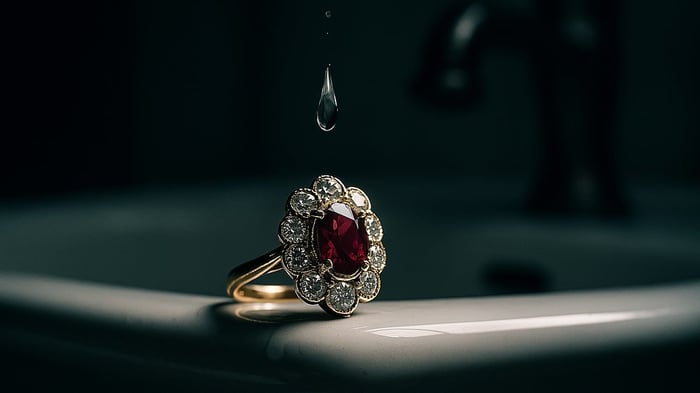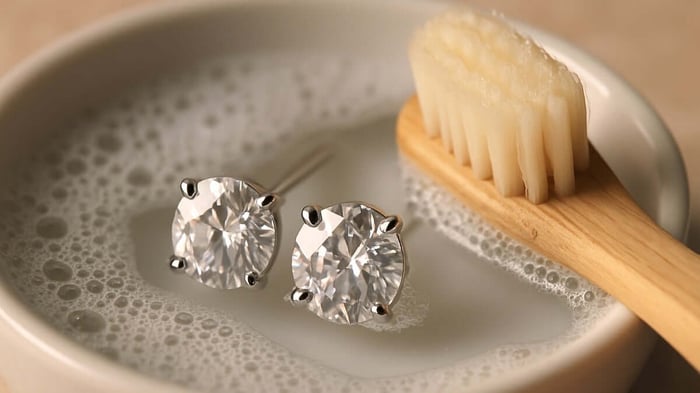Table of Contents
Picture this: Grandma’s ruby ring, glinting in the sunlight—until, one day, a stone goes missing while washing the dishes. It could’ve been avoided (the loss, not the washing-up). With nearly three decades at the jeweller’s bench, this article delivers a blend of practical brilliance and genuinely oddball advice to keep your gemstones safe, all based on real experience. Whether your ring is a family heirloom or a modern sparkler, these unconventional tips will make sure your stones stay in place (and out of the plumbing).
Article Summary
This article unpacks some less obvious yet crucial tips for protecting your gemstone-studded jewellery, blending professional wisdom with everyday, relatable stories. Learn not only how to protect your diamonds and rubies from the heartbreak of loss or damage, but also how to spot trouble before it happens—and why maintaining your jewellery is a little like looking after a vintage car.
Get Your Jewellery Inspected: The MOT Every Piece Needs
When it comes to jewellery care and diamond jewellery care, nothing beats a regular professional inspection. Think of it as the MOT your precious pieces deserve—an annual check-up that could save you from heartbreak and costly repairs down the line. Just as you wouldn’t skip servicing your car, your gemstones and settings need the same attention to keep them sparkling and secure.
Rubí de 1,60 ct con anillo trilogía de diamantes de 0,25 ct en oro blanco de 18 k
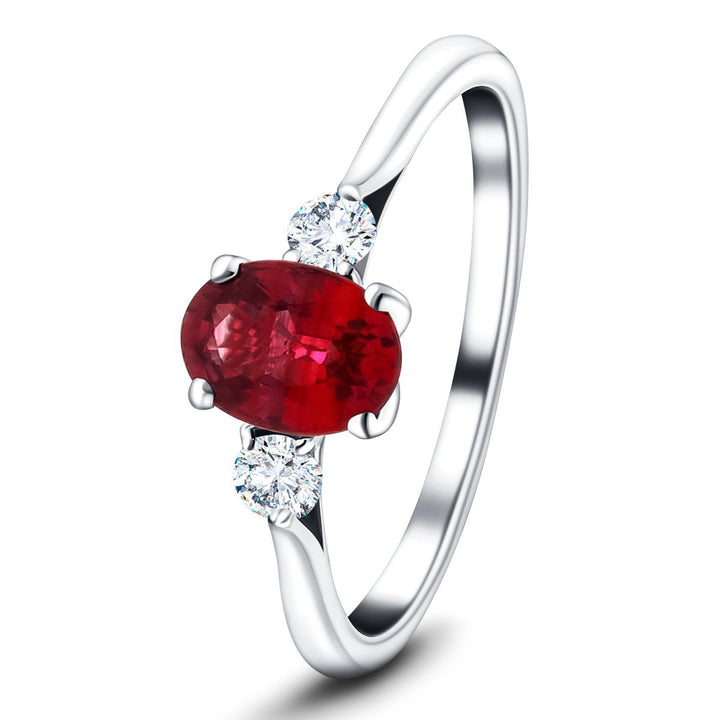
€1.964,95
Demuestra tu sentido del estilo y buen gusto con este impresionante anillo para mujer. Mejore cualquier atuendo cuando complemente con la gema de rubí rojo brillante de esta pieza. La belleza sencilla de este anillo de talla ovalada lo convierte… read more
Why Regular Inspections Matter
Everyday wear, knocks, and even simple hand washing can loosen prongs or claws, putting your gemstones at risk. A professional maintenance check by a certified jeweller is the best way to catch these issues early. Most jewellers recommend an annual inspection for all precious pieces, especially those you wear often, like engagement rings and diamond earrings.
What to Expect During a Professional Maintenance Check
- Find a jeweller with a manufacturing specialist on site: These experts have the tools and know-how to spot even the smallest issues.
- Quick and convenient service:As one expert puts it,
"Take your ring into your nearest jeweller… you usually have it back within the same day."
Many jewellers offer same-day service, and some will even inspect your jewellery while you wait. - Minimal cost, maximum peace of mind: Inspections are often free or come with a very modest fee, making them an easy addition to your annual routine.
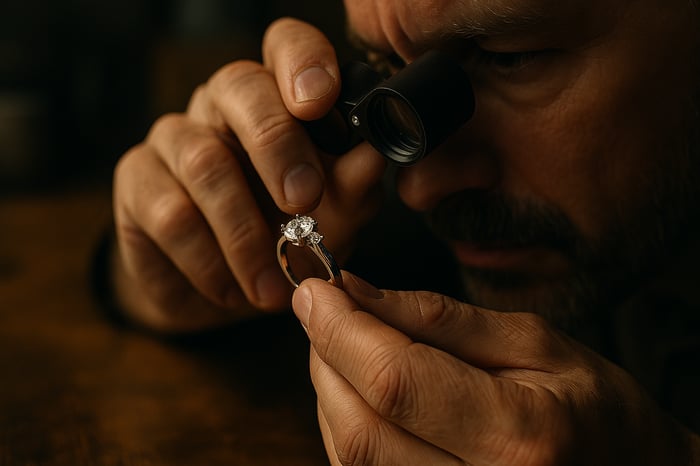
How Jewellers Inspect Your Jewellery
Certified jewellers use specialist tools to check the integrity of your jewellery’s settings. They’ll:
- Examine prongs and claws: Using magnification, they’ll look for signs of wear, thinning, or bending that could lead to stone loss.
- Test for loose stones: A gentle tap or probe will reveal if any gems are at risk of falling out.
- Ultrasonic cleaning: Many jewellers use ultrasonic machines to remove dirt and grime, restoring brilliance and making flaws easier to spot.
- Professional polish: Your piece will often receive a quick polish, bringing back its original shine.
Fast Turnaround, No Fuss
Most inspections are quick and painless. Drop your jewellery off in the morning and, in many cases, it will be ready by the afternoon. If the shop is busy, you may be asked to return the next day, but the process is rarely a hassle. With this simple step, you’re ensuring your treasures remain safe, sparkling, and ready to wear.
0.60ct Esmeralda 0.40ct Diamante Anillo Cinco Piedras Oro Blanco 18k
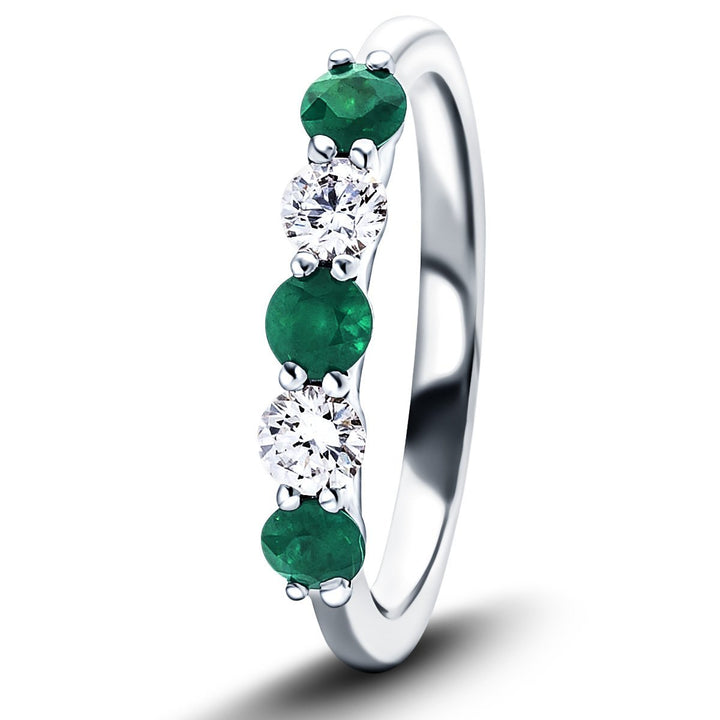
€1.767,95
Para aquellos que buscan una pieza única y alternativa que lleve su estilo al siguiente nivel, no busquen más allá de este hermoso anillo. Un anillo de cinco piedras de alta calidad con las hermosas esmeraldas de corte redondo y… read more
The Everyday Habits That Put Your Gemstones at Risk
When it comes to Jewelry Maintenance, everyday routines can be surprisingly hazardous to your gemstones. Many people wear their rings constantly—through washing up, gardening, showering, and even while sleeping. While this may seem harmless, these habits can quietly accelerate wear and tear, putting your precious stones at significant risk.
- Wearing Rings Non-Stop: Daily exposure to water, soaps, and chemicals during chores like washing dishes or bathing can weaken the settings. Gardening or manual work can bend prongs and scratch stones. Even the friction from bedsheets while sleeping can loosen a stone over time.
- Ignoring Early Warning Signs: One of the first signs of trouble is when your ring’s prongs begin to snag on clothing or hair. If you notice a soft ‘clink’ sound when you tap your ring, it’s a clear indicator that the stone is starting to loosen.
- Lack of Essential Care: Many people forget that, just like a car or home, jewellery requires regular upkeep. Without routine Jewelry Care, the risk of losing a stone increases dramatically.
As one seasoned jeweller puts it:
"Your ring can be guaranteed to lose a stone probably within two to five years, unless it is regularly checked."This is not just a scare tactic—data shows that stone loss is common within two to five years for rings worn continuously without proper maintenance. The reason is simple: the tiny prongs holding your stones are under constant stress. Over time, they can bend, weaken, or catch on fabrics, eventually prying open enough for the stone to fall out.
How to Detect Imminent Stone Loss
- Snagging: If your ring catches on jumpers, towels, or hair, it’s a sign the prongs are no longer secure.
- Unusual Sounds: A faint ‘clink’ or rattle when you gently shake or tap your ring means the stone is moving in its setting.
Ignoring these signs can lead to heartbreak. Once a prong fails, the stone can drop out unnoticed—often lost forever. While insurance may cover the financial loss, the sentimental value is irreplaceable. That’s why Essential Care—including daily cleaning and regular professional check-ups—is vital for keeping your jewellery beautiful and secure for years to come.
Anillo Cluster de Aguamarina 0.65ct y Diamante 0.31ct en Oro Amarillo 18K
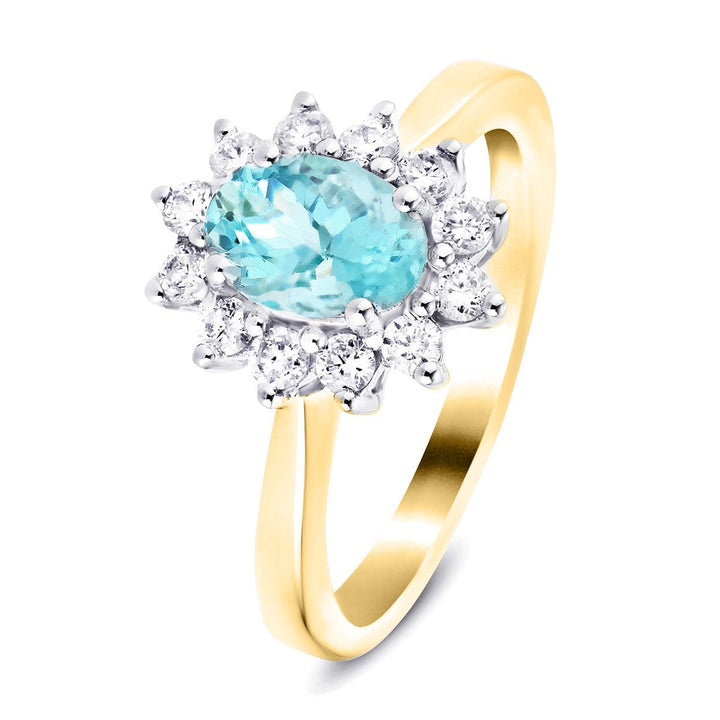
€910,95
Este exquisito anillo de aguamarina y diamantes es un soplo de aire fresco en el mundo de la joyería. El delicado anillo de aguamarina está rodeado por un grupo de brillantes diamantes, lo que agrega un toque de brillo y… read more
When Rings Collide: The Unseen Danger of Stacking
Stacking rings is a popular trend, but it comes with an often-overlooked risk—especially when it comes to diamond jewellery and other stone-set pieces. Wearing two or more rings side by side may look stylish, but it can quietly cause significant damage over time. This is a crucial aspect of core maintenance that many overlook.
The Grinding Effect: How Stacking Causes Damage
When you wear rings next to each other, especially if one features exposed stones or prongs, the constant movement throughout the day creates friction. This isn’t just a minor annoyance; it’s a slow, abrasive process that can have serious consequences. The rings rub together, and this repetitive motion acts like a miniature file, gradually wearing away at the metal.
"That grinds away slowly but surely… until one day the claw just snaps off and the stone falls out."This analogy is apt: imagine a prisoner patiently filing away at the bars of a cell. Each tiny movement seems insignificant, but over time, the metal weakens. Eventually, the ‘bars’—or in this case, the prongs holding your gemstone—give way, and the stone is lost. This is why core maintenance is so important for anyone who loves stacking rings.
Spotting the Signs of Trouble
- Look for grooves or thinning on the sides of your rings.
- Check for sharp edges or uneven surfaces where rings touch.
- If you notice your prongs are wearing down, act quickly to prevent stone loss.
It’s important to realise that in this duel between rings, one will always ‘win’—and it’s usually the ring with the stones that loses. A plain band can grind away at the delicate prongs of a stone-set ring, putting your gemstones at risk.
Anillo de racimo de ópalo de 1,49 quilates y diamantes de 0,82 quilates en oro amarillo de 9 quilates
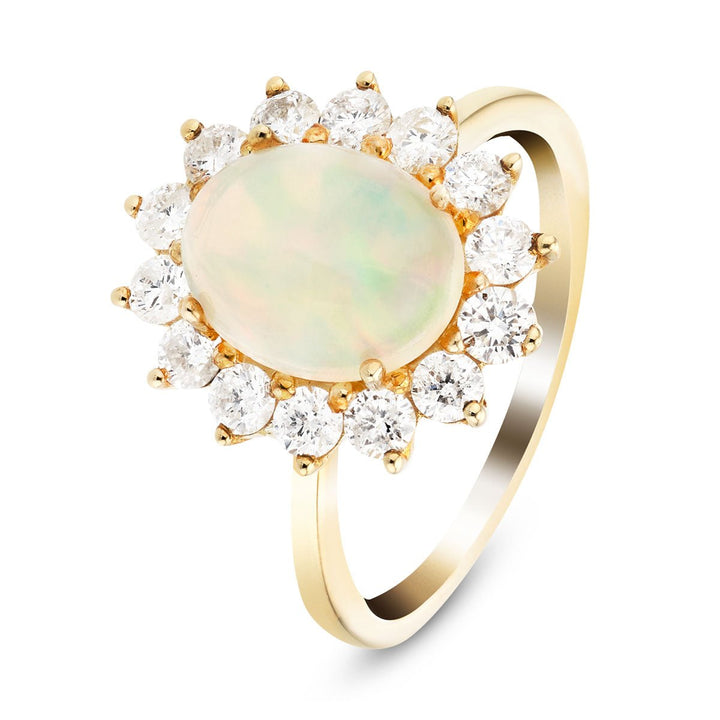
€1.119,95
Este anillo de racimo de ópalo y diamantes en oro amarillo es un anillo clásico pero moderno que lucirá fabuloso en su dedo. El ópalo en el centro emite un impresionante color crema con reflejos iridiscentes, y los diamantes agrupados… read more
Prevention: Smart Storage and Wearing Habits
To avoid this unseen danger, store each piece of diamond jewellery separately in a soft, fabric-lined jewellery box. This simple step prevents unnecessary friction when your rings aren’t being worn. When stacking, try to avoid placing stone-set rings directly next to other rings, especially plain bands. Rotate your rings and give each piece a break to minimise wear.
Remember, damage from stacking is gradual but inevitable if left unchecked. A little attention to core maintenance and proper storage can keep your gemstones secure and sparkling for years to come.
D-I-Y Inspections (and Why Toothpicks Aren’t Just for Sandwiches)
When it comes to keeping your gemstones safe—be it diamonds, rubies, or sapphires—sometimes the simplest tools can be surprisingly effective. Enter the humble toothpick: not just for party snacks, but a secret weapon for quick, at-home jewellery inspections. This method is especially relevant with the rise of mass-produced rings, where thin prongs and rushed settings can put your gemstones at risk.
To perform a basic inspection, gently nudge each stone in your ring with a toothpick. Watch closely for any movement. If a stone appears to ‘swim’ or rock back and forth, it’s a sign the setting is loose. As one seasoned jeweller puts it:
“See, there’s rocking in the cradle… dangerously close to falling out!”This simple test can help you spot trouble before it becomes a disaster, especially with ruby jewellery and other gems that, while hard, are not immune to sharp impacts or heat.
But don’t stop there. Visual checks are just as important for keeping all your gemstones safe. From the top, prongs may look thick and sturdy, but appearances can be deceiving. Always inspect your ring from the side. Thin, worn prongs—often found in mass-produced jewellery—are a red flag. These settings may look fine at first glance, but over time, they can wear down and fail, putting your gemstones at risk of loss. This is a common pitfall in today’s jewellery trends, where speed and cost often trump craftsmanship.
While these D-I-Y checks are invaluable for staying proactive, they are not a substitute for Professional Maintenance. Regular visits to a reputable jeweller are essential for long-term safety. Mass production often means corners are cut, especially in the quality of settings. Whenever possible, choose a local jeweller with a manufacturing workshop on site. Referrals from friends and family are far more reliable than flashy adverts—trust is everything when it comes to your most valuable pieces.
In summary, a toothpick and a keen eye can save you from heartbreak and expense, but nothing replaces the expertise of a trusted professional. Whether you’re caring for diamond or ruby jewellery, remember: proactive inspections and quality craftsmanship are your best defence against loss. Support local jewellers, stay vigilant, and your gemstones will sparkle safely for years to come.
Anillo Halo de tanzanita ovalada de 1,85 quilates y diamante de 0,41 quilates en oro blanco de 18 quilates
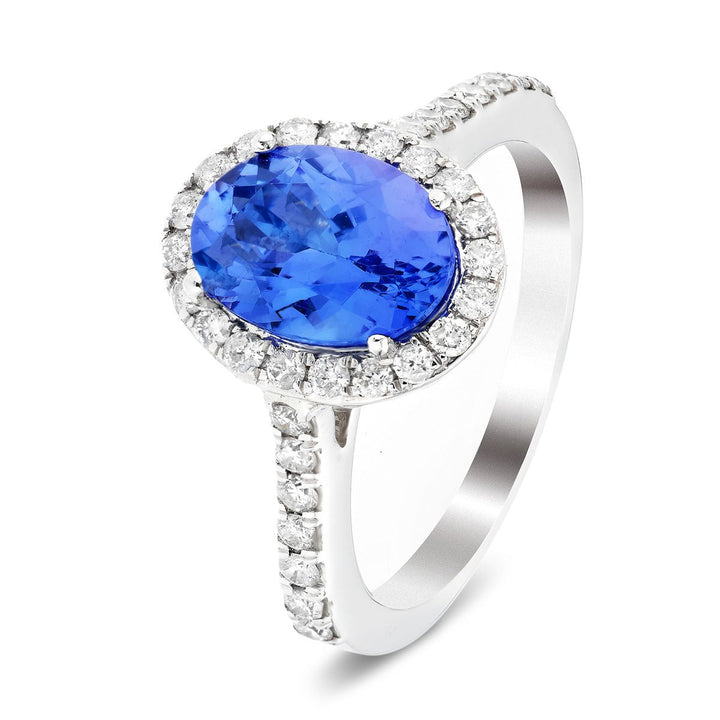
€1.801,95
La tanzanita es una de las gemas más raras. Su tono profundo y rico de tonos morados y azules lo hace llamativo y único. Agregue estas piedras a su anillo y haga una declaración. La forma ovalada le da al… read more
Because Every Diamond Deserves Its Story
Keeping your gemstones safe and secure in your jewellery means those little treasures stay part of your story for years to come. The same goes for choosing pieces that are beautifully made from the start. At All Diamond, our engagement rings, eternity rings, and cocktail rings are designed with secure settings and crafted to stand the test of time.
Whether you’re celebrating love, marking a milestone, or simply indulging yourself, you’ll find jewellery that’s made to sparkle—today and always.
FAQs
How often should I have my diamond jewellery professionally inspected?
Most jewellers recommend an annual inspection—similar to an MOT for your car. Frequent-wear items like engagement rings or diamond earrings may benefit from a six-month check-up to catch wear before it becomes costly damage.
Can I safely clean my diamond or ruby ring at home?
Yes—gentle cleaning with warm water, mild soap, and a soft brush is safe for most gemstones. Avoid harsh chemicals, ultrasonic machines, or toothpaste scrubs unless you know your setting is sturdy. Fragile prongs and softer stones (like emeralds or opals) should only be cleaned by a jeweller.
What everyday habits cause the most damage to diamond jewellery?
The biggest culprits are wearing rings while washing dishes, showering, gardening, or sleeping. Soaps, chemicals, and friction gradually weaken prongs. Even stacking rings can grind claws down, leading to stone loss within just a few years if unchecked.
Is it normal for my ring to snag on clothing or hair?
Snagging is a warning sign that your prongs may be bent or thinning. This means your stone could already be loose. A quick professional check can usually secure it before you risk losing the gem entirely.
How can I protect heirloom jewellery like grandma’s ruby ring?
For heirloom pieces, combine professional maintenance with safe storage. Keep rings in fabric-lined boxes, avoid stacking with plain bands, and consider wearing them only on special occasions. A good jeweller can reinforce or rebuild old settings so the sentimental value—and stones—are preserved for generations.
